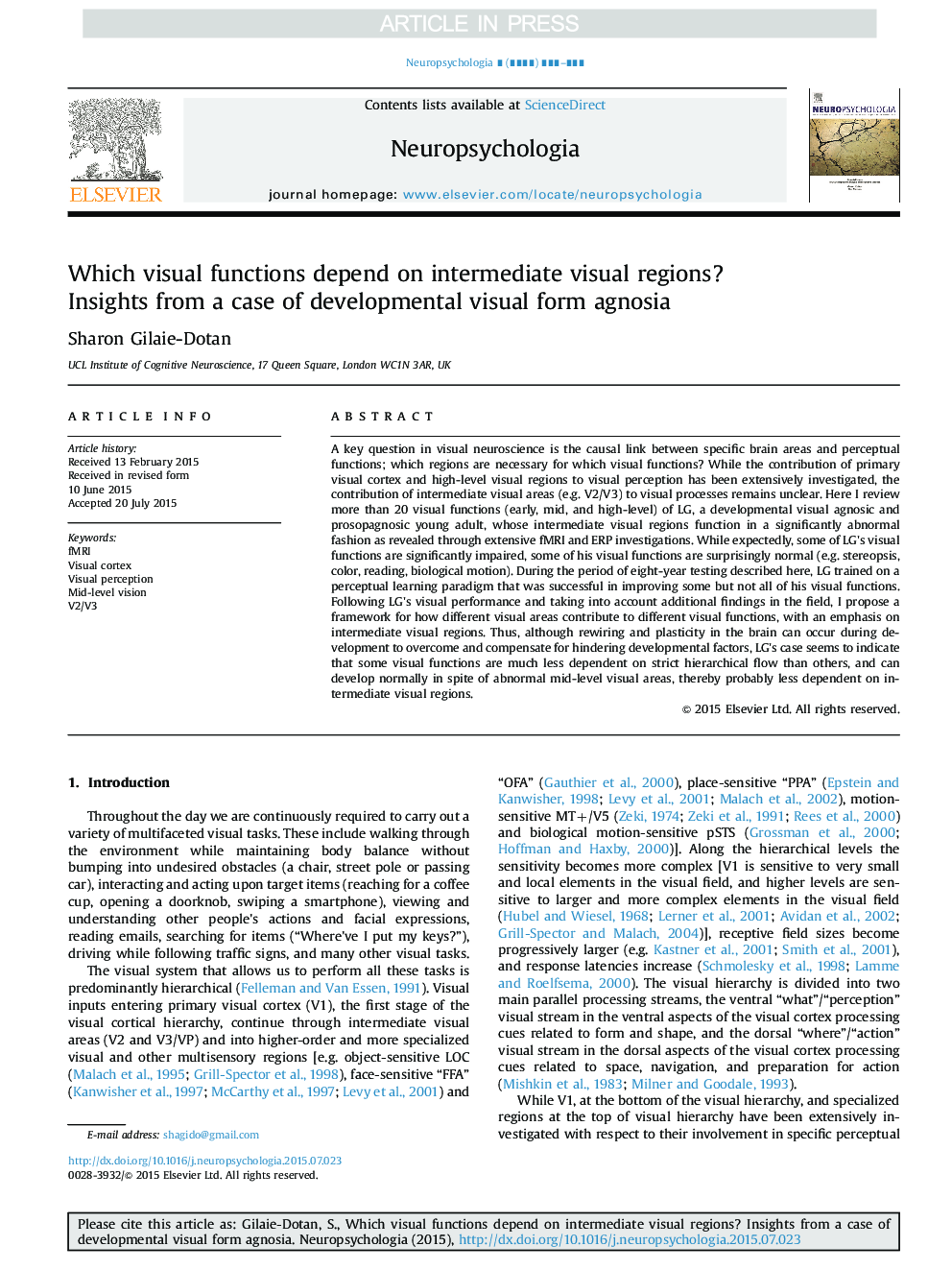| Article ID | Journal | Published Year | Pages | File Type |
|---|---|---|---|---|
| 7319230 | Neuropsychologia | 2016 | 13 Pages |
Abstract
A key question in visual neuroscience is the causal link between specific brain areas and perceptual functions; which regions are necessary for which visual functions? While the contribution of primary visual cortex and high-level visual regions to visual perception has been extensively investigated, the contribution of intermediate visual areas (e.g. V2/V3) to visual processes remains unclear. Here I review more than 20 visual functions (early, mid, and high-level) of LG, a developmental visual agnosic and prosopagnosic young adult, whose intermediate visual regions function in a significantly abnormal fashion as revealed through extensive fMRI and ERP investigations. While expectedly, some of LG's visual functions are significantly impaired, some of his visual functions are surprisingly normal (e.g. stereopsis, color, reading, biological motion). During the period of eight-year testing described here, LG trained on a perceptual learning paradigm that was successful in improving some but not all of his visual functions. Following LG's visual performance and taking into account additional findings in the field, I propose a framework for how different visual areas contribute to different visual functions, with an emphasis on intermediate visual regions. Thus, although rewiring and plasticity in the brain can occur during development to overcome and compensate for hindering developmental factors, LG's case seems to indicate that some visual functions are much less dependent on strict hierarchical flow than others, and can develop normally in spite of abnormal mid-level visual areas, thereby probably less dependent on intermediate visual regions.
Keywords
Related Topics
Life Sciences
Neuroscience
Behavioral Neuroscience
Authors
Sharon Gilaie-Dotan,
